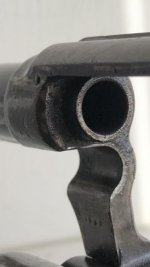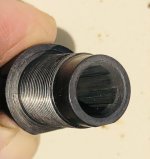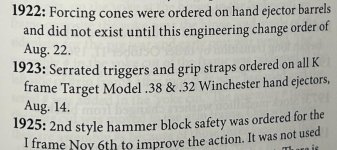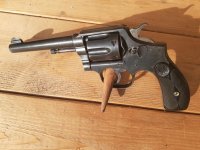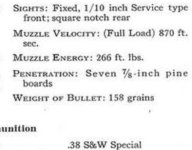I'm not really knowledgeable on the M&P Models. I do know that the early model was introduced as a Black powder revolver in 1899 and has a thin forcing cone. See photo 1 of my early 1st model circa 1900.
At some point the forcing cone was beefed up for smokeless use.
My question is when did that happen? Was it after 1907 when Smith & Wesson guaranteed their revolvers for smokeless use?
Photo 2 is a later barrel.
I have shot my Model 1 several times with light loads of bullseye. 2.5 grains with a 148 grain Wadcutter and have had no issues. Shoots great.
I have a 1906 ( by factory letter as shipped) as well. I'd like to shoot it just want to know if I can shoot standard 38 Special through it or stick with the light stuff?
Murph
At some point the forcing cone was beefed up for smokeless use.
My question is when did that happen? Was it after 1907 when Smith & Wesson guaranteed their revolvers for smokeless use?
Photo 2 is a later barrel.
I have shot my Model 1 several times with light loads of bullseye. 2.5 grains with a 148 grain Wadcutter and have had no issues. Shoots great.
I have a 1906 ( by factory letter as shipped) as well. I'd like to shoot it just want to know if I can shoot standard 38 Special through it or stick with the light stuff?
Murph

